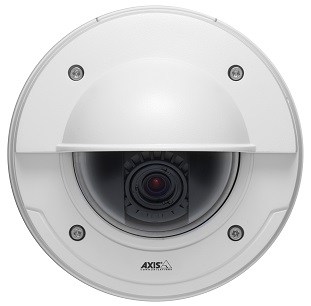
Higher Megapixels are all the rage in IP cameras. Who can blame it? In a world of HDTV, higher resolution is a seductive quality. Details that have been missed for decades are now clearly defined, for better or for worse. When converting this over to surveillance, that paradigm is exactly what someone is looking for in their security system.
Several manufacturers have been quick to respond with higher resolution cameras, but strangely, the larger name brands such as Axis, SONY, Panasonic, and MOBOTIX were slow to respond. When speaking with the engineers at these companies, one comes to discover that higher resolution is not a simple cut-and-dry process.
The technology behind pixels is actually quite interesting. In simplest terms, think of pixels as units of light. A black pixel on the screen is an empty pixel, it contains no light. A white pixel is considered full of light. All the colors in between are varying temperatures of light, much like how a rainbow works. This is all based on the camera’s image sensor, which contains many photosites which correspond to a pixel. The image sensor can either be CCD, which has excellent light sensitivity but is more expensive to produce and somewhat of a lower technology chip, or the image sensor can be CMOS, which is comparatively a smarter chip and is less expensive.
Axis, SONY, Panasonic, and MOBOTIX are industry leaders, and as such they are incredibly picky about their lens (here, lens referring to the entire unit rather than just the glass). SONY manufactures their own with the Exmor CMOS sensor, but even for the IP cameras designed without it, SONY ships every camera with their own lens to ensure the camera will at least deliver quality 1 Megapixel resolution.  Panasonic and Axis have in recent years switched to HDTV resolution also, often keeping to either 720p or 1080p HD, and MOBOTIX firmly kept to 3 Megapixel resolution for a long time as well. The reasoning behind this? Other brands don’t spend a lot of time on the technology behind Megapixel lens. In order to meet public demand, they quickly ship out the next highest 5MP lens on their camera.
Panasonic and Axis have in recent years switched to HDTV resolution also, often keeping to either 720p or 1080p HD, and MOBOTIX firmly kept to 3 Megapixel resolution for a long time as well. The reasoning behind this? Other brands don’t spend a lot of time on the technology behind Megapixel lens. In order to meet public demand, they quickly ship out the next highest 5MP lens on their camera.
When speaking with SONY, one of their engineers stated that a problem they kept seeing in higher Megapixel cameras was light overexposure. The higher pixel lens were absorbing so much light and their processors weren’t able to convert the output into a quality image. That was when they created their Exmor CMOS sensor, which has high speed readout and been utilized in their WDR technology, View-DR, and Visibility Enhancer feature.
Axis managers gave similar responses when speaking with them about high Megapixels. For the longest time, it all boiled down to not finding a lens that produced an image that held to Axis’ standards. It seems that that time has passed. Now Axis has a wide variety of HDTV cameras with Megapixel lens with their P33 series and P13 series, both of which have 3MP and 5MP options.
Panasonic was also careful with their Megapixel IP cameras, offering additional lenses aside from their own, from an exclusive OEM partnership with Fujinon.
Happily, MOBOTIX has also announced that a 5MP lens has met their expectations and will be launched in their new S15, D15 and V15 IP cameras. Even the directors were shocked at the clarity their test cameras were proving. The example of the flying dove was displayed proudly at this year’s conferences.
It seems now it is safe to claim that, yes, bigger is better. ACTi has released entire new lines of cameras replacing their old ACM, TCM, and KCM series, ranging from 1 MP up to the anticipated 10 MP coming later this year. With all these new Megapixel IP cameras steadily trickling out of these top line manufacturers, it seems like the age of quality HDTV surveillance systems has dawned.
To learn more about Megapixel IP cameras and to see if they make sense for your surveillance needs, call our IP Surveillance Specialist Tom Uhteg at 866.885.4853.
Have you had any experiences with early HDTV surveillance cameras? How did you like it? What are you looking forward to in the coming years?


